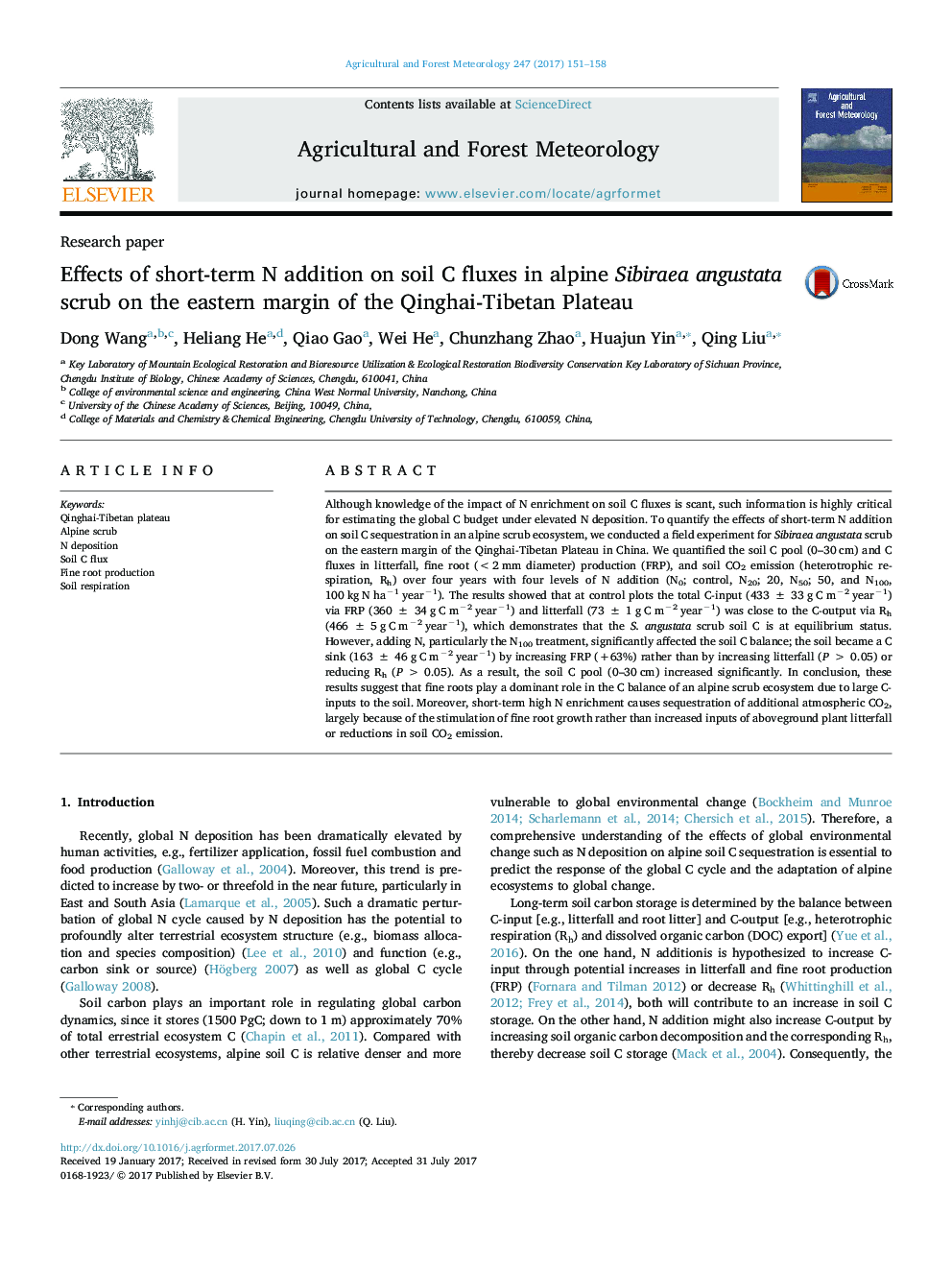| Article ID | Journal | Published Year | Pages | File Type |
|---|---|---|---|---|
| 6457750 | Agricultural and Forest Meteorology | 2017 | 8 Pages |
â¢Effects of short-term N addition on soil C budget in alpine scrub.â¢Fine roots play a dominant role in the soil C balance of an alpine scrub ecosystem.â¢Short-term N addition increased soil C storage by increasing fine root production.â¢Alpine scrub ecosystem may function as a net C sink under high N enrichment.
Although knowledge of the impact of N enrichment on soil C fluxes is scant, such information is highly critical for estimating the global C budget under elevated N deposition. To quantify the effects of short-term N addition on soil C sequestration in an alpine scrub ecosystem, we conducted a field experiment for Sibiraea angustata scrub on the eastern margin of the Qinghai-Tibetan Plateau in China. We quantified the soil C pool (0-30 cm) and C fluxes in litterfall, fine root (<2 mm diameter) production (FRP), and soil CO2 emission (heterotrophic respiration, Rh) over four years with four levels of N addition (N0; control, N20; 20, N50; 50, and N100, 100 kg N haâ1 yearâ1). The results showed that at control plots the total C-input (433 ± 33 g C mâ2 yearâ1) via FRP (360 ± 34 g C mâ2 yearâ1) and litterfall (73 ± 1 g C mâ2 yearâ1) was close to the C-output via Rh (466 ± 5 g C mâ2 yearâ1), which demonstrates that the S. angustata scrub soil C is at equilibrium status. However, adding N, particularly the N100 treatment, significantly affected the soil C balance; the soil became a C sink (163 ± 46 g C mâ2 yearâ1) by increasing FRP (+63%) rather than by increasing litterfall (P > 0.05) or reducing Rh (P > 0.05). As a result, the soil C pool (0-30 cm) increased significantly. In conclusion, these results suggest that fine roots play a dominant role in the C balance of an alpine scrub ecosystem due to large C-inputs to the soil. Moreover, short-term high N enrichment causes sequestration of additional atmospheric CO2, largely because of the stimulation of fine root growth rather than increased inputs of aboveground plant litterfall or reductions in soil CO2 emission.
